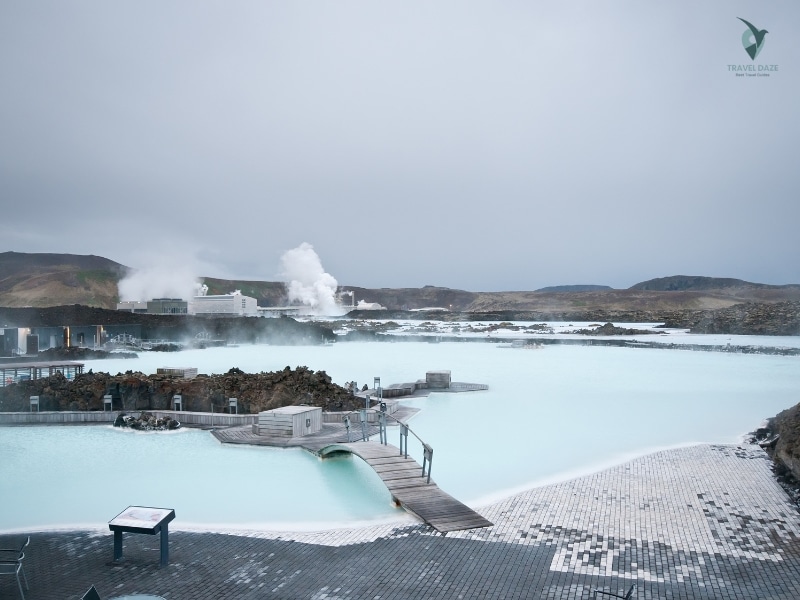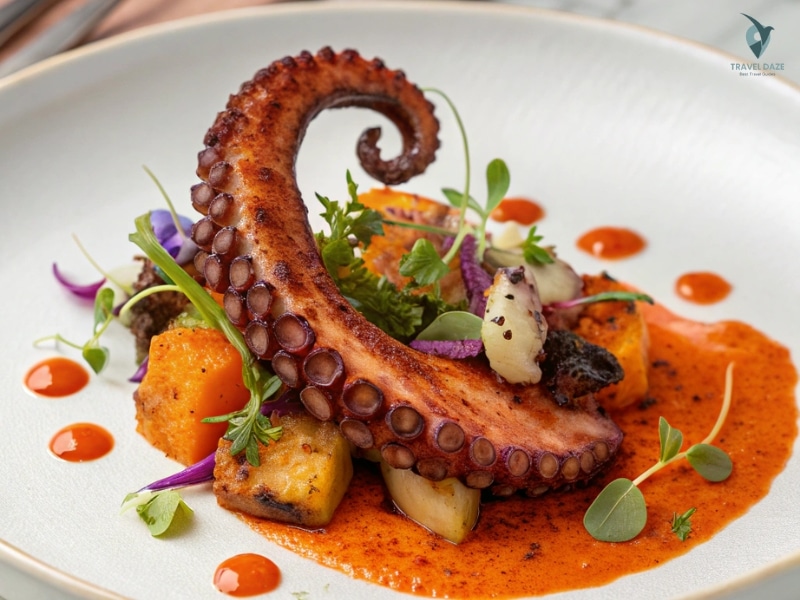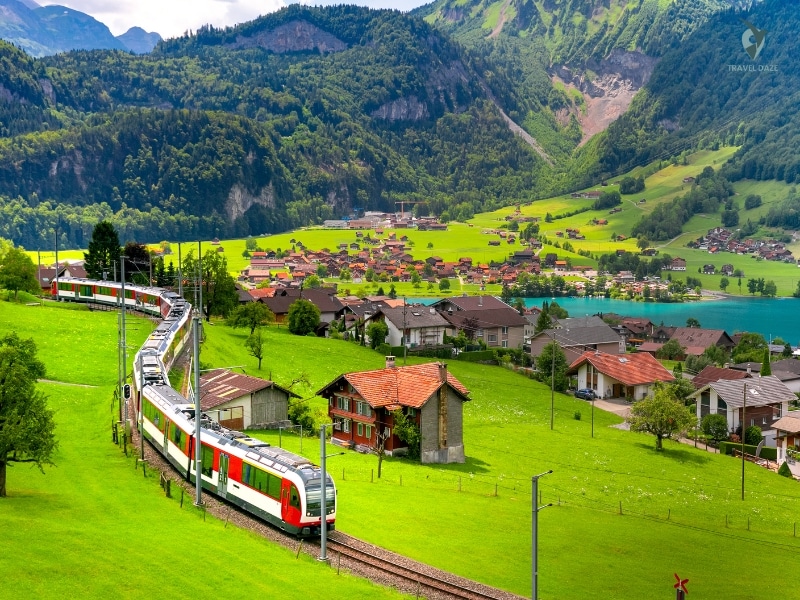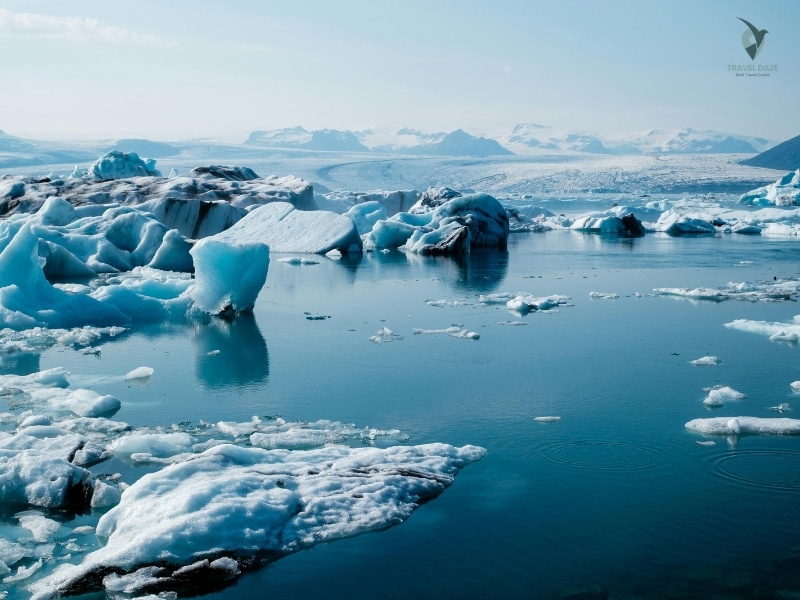The weather in Iceland is both beautiful and unpredictable. There isn’t one perfect time to discover this land of fire and ice; instead, there are various adventures to enjoy in every season. Whether you pursue the midnight sun or the moving Northern Lights, the timing influences your experience.
Table of Contents
ToggleAs a solo traveller, I’ve come to appreciate the unpredictability of Iceland. Summer brings long days and busy trails, while winter provides quiet moments beneath the northern lights. Road conditions can change quickly, so it’s important to check road.is. This guide explains what each season has to offer, making it easier for you to choose your perfect trip.
Main Points
- The weather in Iceland changes a lot, making each season special.
- Summer brings bright days with constant sunlight and energetic people everywhere.
- Winter shines with the Northern Lights and offers a calm quietness.
- Check the road conditions before you travel.
- People travelling alone can customise their trips to match what they like.
The Seasons of Iceland: What to Expect Throughout the Year
Iceland’s beauty changes with each season, showcasing its stunning landscapes in unique ways. I have come to appreciate them all—each offers its own special experiences, from dancing auroras to golden fjords. This is how the year goes on this wild island.

Winter (December–March): Dark Skies and Northern Lights
Winter covers Iceland in enchantment. The Northern Lights are amazing, but be careful on the icy roads. I always rent a 4WD and check the road. is because some routes can be completely closed. The Winter Lights Festival in Reykjavík in February brings a warm and inviting atmosphere.
Summer (June–August): Long Days and Hiking
Summer brings long days filled with light. Hiking the South Coast at midnight? Absolutely, yes! Trails are lively, and waterfalls like Seljalandsfoss shine in the sunlight. Make sure to book your tours in advance, as the crowds are at their highest in July.
Shoulder Seasons (April–May, September–November): Less Crowding
In April, you can see puffins and enjoy smoother seas for whale watching. In September, the landscapes become golden, and the auroras come back. I find affordable places to stay and enjoy peaceful paths—it’s my favourite hidden gem.
The Ideal Time to Visit Iceland for Those Seeking the Northern Lights
Few experiences compare to seeing the auroras move across Iceland’s winter sky. From December to January, the nights are the darkest, providing only four hours of daylight. This is an ideal time to see the northern lights. Success needs careful planning. I found this out the hard way near Thingvellir, where clouds spoilt my first attempt. I always check vedur.is for weather forecasts.
December to January: Best Time for Aurora Watching
These months bring the longest nights in Iceland. Dress warmly and go outside between 9 PM and 2 AM for the best chances. The lights of Reykjavík make it hard to see, so I drive to the Snæfellsnes Peninsula for dark skies. In December, Christmas markets and ice rinks bring a special festive charm.
Tips for Amazing Views
- Get away from the city lights: rural places like Þingvellir or Kirkjufell Mountain provide clear views.
- Take part in guided tours where experts monitor aurora activity and safely navigate icy roads.
- Be patient: the lights may come on unexpectedly or not show up at all.
Be aware: Sudden snowstorms may lead to Route 1 being closed. Keep an eye on road.is and rent a four-wheel drive vehicle. A blizzard once left me stuck near Vik, so now I always have snacks and blankets in the car.
Summer Fun: When Iceland Shines
Iceland changes in the summer sun, showing off landscapes filled with golden light. From June to August, waterfalls thunder beneath vast skies, and mountain roads are finally accessible. It’s my favourite time for solo hikes—no need for headlamps.

Walking in the Light of the Midnight Sun
The Laugavegur Trail seems unreal with daylight lasting for 24 hours. One night, I camped close to Landmannalaugar at 1 AM, observing pink light dance across the rhyolite mountains. Here’s a helpful tip: Begin later. Most tour buses depart by 6 PM, leaving the paths wonderfully clear.
Celebrations and Secret Treasures
Reykjavík is full of life during Secret Solstice and Pride. For a more peaceful atmosphere, I go to the Westfjords, where the fjords remain free of crowds even in July. Avoid Skógafoss at noon; visiting at sunrise ensures you’ll have the place to yourself for photos.
- Experience the magic of the midnight sun by visiting the Golden Circle after 10 PM to see the peaceful waterfalls.
- Make sure to book campsites in advance—popular places like Þórsmörk get filled up quickly.
- Fishermen’s Day in June brings fresh lobster feasts to coastal towns.
Winter Wonderland: Snow, Ice Caves, and Hot Springs
Winter in Iceland is not only cold; it’s a place for exciting frosty adventures. From November to March, snow covers the ground, and ice caves like Katla’s shine a bright blue. What do I like most about contrasts? Relaxing in warm hot springs while the temperature drops below freezing.

February to March: Enjoying Snow Sports and Warm Baths
Late winter is the perfect time for excitement. I raced across the Langjökull glacier on a snowmobile, feeling the cold wind on my cheeks. Later, the mist from the Blue Lagoon stuck to my cold eyelashes—a strange mix. The Winter Lights Festival in Reykjavík in February brings a warm and inviting atmosphere with fireworks and geothermal pool parties.
How to Dress for Extremely Cold Weather
I discovered how to layer properly in the Eastfjords through experience. Avoid cotton because it holds onto moisture. Here is my survival kit:
- Wool base layers: Merino keeps you warm, even when it’s wet.
- A waterproof shell is essential because sudden storms can happen often.
- Yaktrax: These easy-to-use spikes helped me on icy paths.
- Heated gloves are definitely worth the investment for aurora photography.
Here’s a helpful tip: Bring a down coat that goes down to your hips. Mine once got stuck during a blizzard, and I was left shivering for hours. Not again.
Spring and Autumn: Iceland’s Hidden Gems
Forget about the busy seasons—’Iceland’s shoulder months offer peaceful surprises. The time between winter’s auroras and summer’s chaos provides a unique balance. With fewer crowds and milder weather, I love the surprises of seeing puffins or experiencing sudden golden sunsets. They are my secret favourites.
April to May: Whales, Puffins, and Melting Fjords
In late April, puffins gather on coastal cliffs such as Látrabjarg. I saw them dive close to Dyrhólaey while the daylight lasted long. In the north, Husavík’s whale-watching boats see humpbacks with fewer tourists—spring’s calm seas make for smoother sailing.
Here’s a helpful tip: Check out Vestmannaeyjar in May. The islands are filled with nesting seabirds, and the trails remain wonderfully quiet. Bring layers—spring here can change from sunny to sleety in just a few hours.
September to November: Beautiful Landscapes and the Return of the Aurora
Autumn is a hidden gem in Iceland. In September, you can participate in réttir, where local farmers guide sheep through the valleys. In October, the icebergs at Jökulsárlón drift beneath golden skies, making it an ideal time for photography away from the summer crowds.
Late autumn brings the northern lights back. I’ve seen them flickering over the rust-coloured hills of Snaefellsnes, which stand out against the white snow of winter. Look out for clear nights after October; the forecasts on vedur.is will help you the most.
- Festival alert: In November, Iceland Airwaves transforms Reykjavík into a centre for indie music.
- Drive through the Snæfellsnes Peninsula to see the autumn colours—Kirkjufell Mountain surrounded by red moss looks amazing.
- Bring waterproof boots. Autumn’s “second summer” can often catch us off guard with its warm days.
Benefits of Solo Travel: The Best Times for Peace and Quiet
Travelling alone in Iceland gives you a level of freedom that group trips often can’t provide. You choose the speed—take your time at secret hot springs or follow the northern lights until morning. The timing is important. Choose the right season, and you’ll trade busy crowds for pure, natural beauty.
Shoulder Seasons: Hidden Gems
May and September are perfect times for finding peace and quiet. I hiked the rainbow hills of Landmannalaugar in May and didn’t see anyone else. Prices for accommodation go down, and locals have the chance to talk. What is October like in the Westfjords? It’s pure magic—golden cliffs, quiet roads, and puffins saying goodbye.
Comparing Winter and Summer Feelings
Winter hostels are lively with a cosy atmosphere—imagine sharing warm blankets and telling stories while enjoying hot cocoa. Summer is a time for backpacker parties, but hiking at sunrise ensures peaceful trails. For a great experience, go to Reykjavík’s pools early in the morning to see locals swimming before they head to work.
- When visiting a hot spring, remember to shower without clothes first, as this is required. Also, keep your voice down, as these places are considered sacred.
- Make sure to text your hostel your hiking route for safety. Iceberg lagoons such as Jökulsárlón require careful attention.
- Take advantage of summer’s long days for late-night drives—just remember to bring blackout curtains for sleeping.
Iceland offers unforgettable moments for solo travellers, whether you enjoy the calm of winter or the vibrancy of summer.
Weather Whiplash: Tips for Packing for Any Season
When packing for Iceland, you need to get ready for all kinds of weather. I’ve discovered that sunny weather can quickly change to rain in just a few minutes. What is the key? Layers, waterproof gear, and boots that handle river crossings with ease.
Become skilled at layering.
The weather in Iceland changes quickly, so it’s best to dress in layers. Begin with a wool base layer, as it removes moisture even when it’s damp. Synthetic fleece mid-layers provide warmth, and a windproof shell protects against cold winds. It’s best to stay away from cotton. It doesn’t work well when it’s wet and takes a long time to dry.
Durable Shoes for Every Situation
My strong boots helped me on icy hikes and dark sand beaches. Brands such as Keen or Salomon are great for rocky trails, and rubber-soled shoes provide good grip on icy paths. Quick-dry sandals are ideal for enjoying the spray of waterfalls in the summer.
- Surprising must-haves: swimsuits for hot springs and sleep masks for the midnight sun.
- Summer brings surprises: UV-blocking sunglasses and SPF 50—absolutely, even in June.
- During the rainy season, it’s essential to pack a compact umbrella (believe me).
Look at the road conditions every day, particularly during winter. I always pack a down jacket, even when it’s warm outside. Iceland’s temperatures can change a lot, but with these items, you’ll be prepared for anything.
Festival Hopping: Planning Your Visit for Local Enjoyment
Iceland’s lively local festivals truly embody the spirit of the country. From seafood celebrations to indie music shows, these events mix tradition with a contemporary touch. Arrange your days with them in mind, and you’ll experience the city at its liveliest.
June’s Double Treats
Secret Solstice transforms Reykjavík into a 72-hour celebration beneath the midnight sun. I danced to DJ sets inside a glacier—this is a unique experience. That weekend, Fishermen’s Day honours coastal towns with lobster boils and boat races. Be sure to check out the harbour festivities in Höfn.
The Musical High Note of November
Iceland Airwaves brings a wave of new artists to the bars of Reykjavík. Last year, I found a folk band in a laundromat that had been turned into a venue. Tip: Look at resale sites for tickets that are available at the last minute. Combine it with a road trip to Snæfellsnes for a more peaceful experience.
- Culture Night in August brings street parties to Reykjavík with live music and bonfires. Join the locals for some grilled lamb skewers.
- Boutique beats: Bræðslan in Borgarfjörður mixes music with geothermal pool hangs.
- In January, the Dark Music Days feature unique performances in warm, inviting spaces.
To create a smooth experience, choose tours that blend festivals with visits to places like the Golden Circle. The long days of summer allow you to explore waterfalls during the day and enjoy music at night.
Perfect Timing for a Road Trip: Ideal Months for Driving
The roads in Iceland offer exciting adventures, especially if you plan your visit carefully. My first try on the Ring Road taught me important lessons about the weather changes throughout the seasons. I now plan my routes using open F-roads and times when there is daylight.
Summer: Open Roads, Busy Highways
From June to August, all roads are open, including the rough F-roads. But be careful: rental cars crowd the roads. I once found myself behind five campervans on the blind turns of Route 1.
Long hours of daylight allow for greater progress. Here’s my suggestion: visit popular places like Seljalandsfoss after 8 PM when the tour buses are gone.
Winter: All-Wheel Drive and Backup Plans
From November to April, you need winter tires and regular road checks. In December, Route 54 closed during a trip, causing a 3-hour diversion. It’s important to have a backup plan.
The Reykjanes Peninsula usually remains accessible even when the highlands are closed. Gather these important items:
- Emergency kit: Blankets, flares, and a portable charger helped me near Akureyri.
- Travel insurance: Provides coverage for unplanned hotel stays during storms.
- Offline maps: Cell service disappears on mountain passes
During warmer months, rentals tend to be cheaper, but the quiet roads of winter have their own charm. For F-roads, the best time to go is from June to September. Make sure to book your 4WDs in advance.
Begin Your Ideal Iceland Adventure Here
The beauty of Iceland comes from selecting experiences that connect with you. There isn’t a single “best” season; it’s all about what makes your trip memorable.
Listen to your instincts instead of following Instagram trends. Do you like being alone? Try to see the puffins in April or the golden fjords in September. Looking for excitement? Summer’s midnight sun and winter’s ice caves both offer unique experiences.
Why choose just one season? Put them together. I went after auroras in March and came back in June for hiking. Make sure to book the Blue Lagoon in advance, as it gets busy throughout the year.
Are you ready? Bring your curiosity. Iceland is ready for you, whether you want long days filled with sunlight or beautiful dancing lights. Your moment to visit Iceland is now.
FAQ
The best time to see the northern lights is during the winter months, typically from late September to early April. This is when the nights are longest and the skies are darkest, providing the best chance to witness this beautiful phenomenon.
From December to January, the nights are at their darkest, which is perfect for looking for the aurora. Leave the city lights behind for the clearest view.
What’s the best advantage of visiting in summer?
From June to August, there is plenty of daylight for hiking, enjoying waterfalls, and attending festivals. The roads are open, but be prepared for larger crowds.
Should you think about spring or autumn?
Definitely! From April to May, you can see puffins and whales. Then, from September to November, enjoy beautiful golden landscapes and the return of the auroras, all with fewer tourists around.
What should I wear for winter trips?
Wear thermal clothing, waterproof jackets, and warm boots. Cold temperatures require warmth, particularly for ice cave tours.
Is it possible to drive around Iceland during the winter?
Yes, but you need a 4WD vehicle. Always look at the road. It’s important to check real-time conditions because storms can quickly close routes.
What makes shoulder seasons special?
With fewer people around, the hot springs are quieter, and you can take better photos. You will also get lower prices on flights and places to stay.
What are the essential items to pack for summer?
Sunglasses (yes, really—the midnight sun can be very bright), quick-dry clothing, and strong hiking boots. The weather changes quickly!
Are there festivals that are worth planning for?
June’s Secret Solstice and November’s Iceland Airwaves are highlights. Make sure to book in advance—these events attract large audiences.
Is travelling alone better in winter or summer?
Winter provides a quiet escape, while summer is filled with lively hostels and group adventures. Choose your style!






